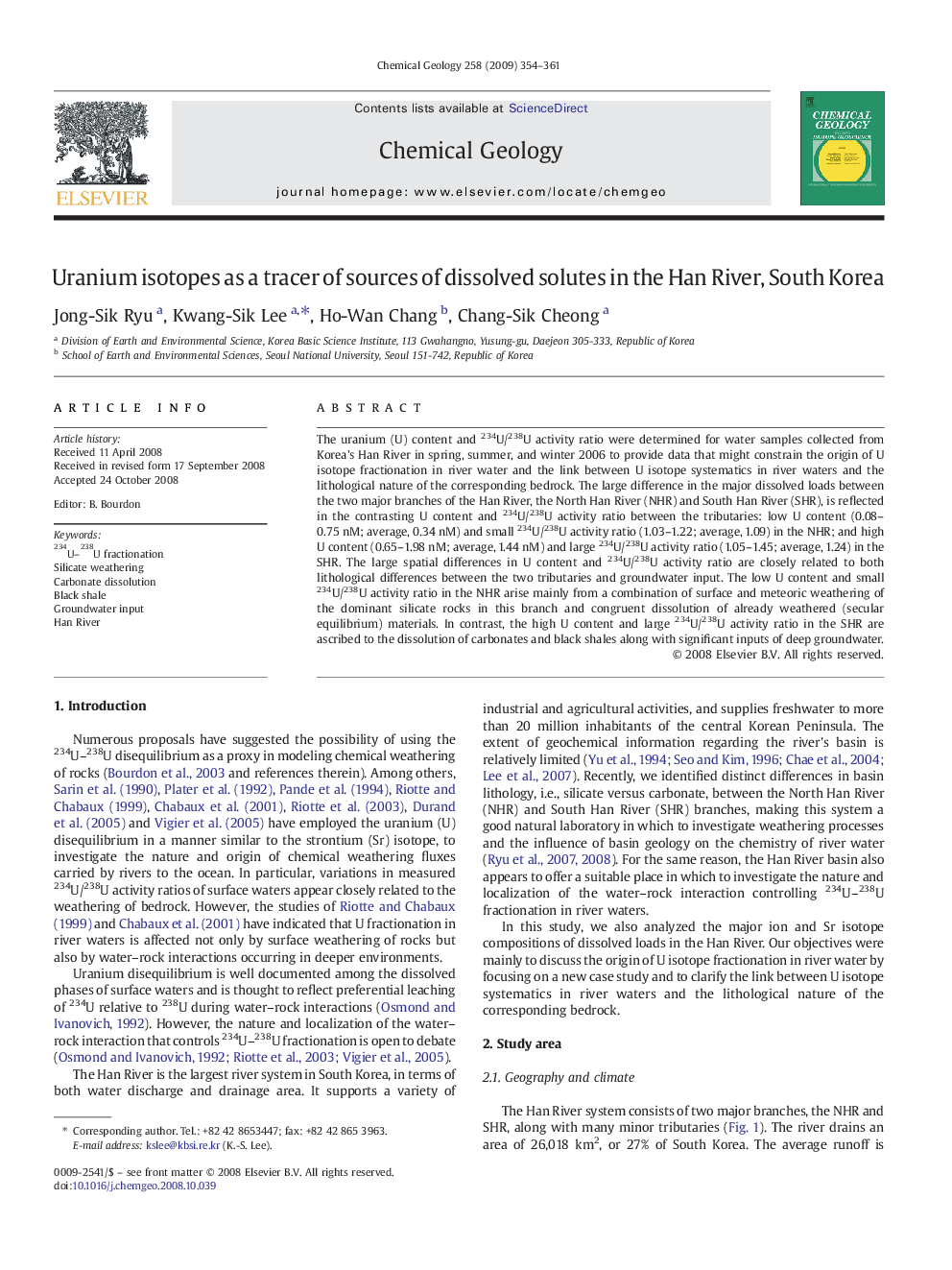| Article ID | Journal | Published Year | Pages | File Type |
|---|---|---|---|---|
| 4700436 | Chemical Geology | 2009 | 8 Pages |
Abstract
The uranium (U) content and 234U/238U activity ratio were determined for water samples collected from Korea's Han River in spring, summer, and winter 2006 to provide data that might constrain the origin of U isotope fractionation in river water and the link between U isotope systematics in river waters and the lithological nature of the corresponding bedrock. The large difference in the major dissolved loads between the two major branches of the Han River, the North Han River (NHR) and South Han River (SHR), is reflected in the contrasting U content and 234U/238U activity ratio between the tributaries: low U content (0.08-0.75Â nM; average, 0.34Â nM) and small 234U/238U activity ratio (1.03-1.22; average, 1.09) in the NHR; and high U content (0.65-1.98Â nM; average, 1.44Â nM) and large 234U/238U activity ratio (1.05-1.45; average, 1.24) in the SHR. The large spatial differences in U content and 234U/238U activity ratio are closely related to both lithological differences between the two tributaries and groundwater input. The low U content and small 234U/238U activity ratio in the NHR arise mainly from a combination of surface and meteoric weathering of the dominant silicate rocks in this branch and congruent dissolution of already weathered (secular equilibrium) materials. In contrast, the high U content and large 234U/238U activity ratio in the SHR are ascribed to the dissolution of carbonates and black shales along with significant inputs of deep groundwater.
Related Topics
Physical Sciences and Engineering
Earth and Planetary Sciences
Geochemistry and Petrology
Authors
Jong-Sik Ryu, Kwang-Sik Lee, Ho-Wan Chang, Chang-Sik Cheong,
